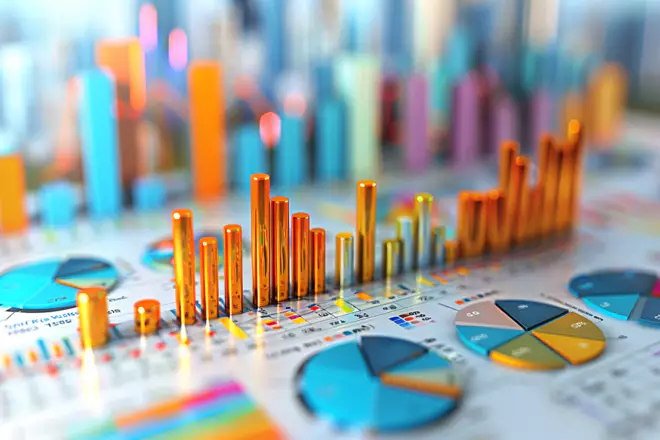US GDP Shows Economic Recovery with 3% Growth in Q2 Amid Trade Fluctuations and Tariff Concerns

The U.S. economy experienced a notable rebound in the second quarter of 2025, with a growth rate of 3.0%, according to the latest data from the U.S. Department of Commerce. This growth comes after a contraction of 0.5% in the first quarter, primarily driven by a significant decrease in imports. Despite this positive headline figure, economists caution that underlying weaknesses persist, as consumer and business spending remain subdued amid ongoing trade policy uncertainties.
Economic Growth Driven by Import Decline
The recent GDP growth figure of 3.0% marks a significant turnaround for the U.S. economy, which had faced a contraction earlier in the year. The increase was largely attributed to a sharp decline in imports, which contributed more than 5 percentage points to the growth rate. This drop in imports is the largest since the onset of the COVID-19 pandemic and follows a period where businesses rushed to stockpile goods in anticipation of proposed tariff increases by the Trump administration. Economists from Goldman Sachs noted that the surge in imports during the first quarter had created a substantial drag on GDP, but the reversal of this trend has raised questions about its sustainability.
While the headline growth figure appears robust, a closer look reveals a core measure of economic performance that excludes volatile components such as exports and government spending has slowed to just 1.2% in the second quarter, down from 1.9% in the first. This decline indicates that the economy’s underlying strength may not be as solid as the overall growth figure suggests. Analysts warn that the apparent recovery may not be sustainable without a more stable trade environment and increased consumer confidence.
Consumer and Business Spending Remain Cautious
Despite the positive GDP growth, consumer and business spending have shown only moderate increases. Households appear to have frontloaded purchases earlier in the year, while businesses are delaying investments due to uncertainty surrounding trade policies. Private investment saw a significant decline, plummeting at an annual rate of 15.6%, marking the steepest drop since the pandemic began. Additionally, business inventory levels fell sharply, contributing to a 3.2 percentage point reduction in GDP growth.
Heather Long, chief economist at Navy Federal Credit Union, emphasized that companies are hesitant to invest in new equipment or hire additional staff amid the prevailing uncertainty. Federal spending has also decreased for the second consecutive quarter, falling by 3.7% after a 4.6% decline in the first quarter. This trend reflects broader concerns about the economic outlook and the impact of tariffs on business activity.
Trade Policy and Tariff Implications
President Trump’s administration has implemented a series of tariffs aimed at restructuring trade relationships, including duties on steel, aluminum, and automobiles. These measures have sparked retaliatory actions from countries like China and Canada, leading to increased costs for U.S. importers. While Trump argues that these tariffs protect American jobs, critics contend that they may contribute to rising inflation. However, inflationary pressures have eased recently, with the core personal consumption expenditures (PCE) index rising by 2.5% in the second quarter, down from 3.5% in the first.
Recent discussions in Stockholm have hinted at a potential truce in trade negotiations, but the final decision rests with Trump. The ongoing trade tensions continue to polarize economists, with some advocating for a more stable trade policy to restore confidence in the economy. As the Federal Reserve prepares to announce its interest rate decision, the implications of these tariffs and trade policies remain a critical focus for economic analysts.
Future Economic Outlook
Looking ahead, economists express cautious optimism about the U.S. economy. While the addition of 104,000 new jobs in July suggests that a recession is not imminent, clarity on trade policy is deemed essential for long-term confidence. Bernard Yaros of Oxford Economics noted that the economy is transitioning to a slower growth phase but is not in decline. He believes the Federal Reserve can afford to wait before making any adjustments to interest rates, allowing time to assess inflation data.
Analysts agree that while consumer spending is slowing, it is not indicative of an impending economic downturn. Long emphasized the need for certainty in trade policies to fully restore the economy’s momentum. As the situation evolves, stakeholders will be closely monitoring developments in trade negotiations and their potential impact on economic growth.
Observer Voice is the one stop site for National, International news, Sports, Editor’s Choice, Art/culture contents, Quotes and much more. We also cover historical contents. Historical contents includes World History, Indian History, and what happened today. The website also covers Entertainment across the India and World.
Follow Us on Twitter, Instagram, Facebook, & LinkedIn

